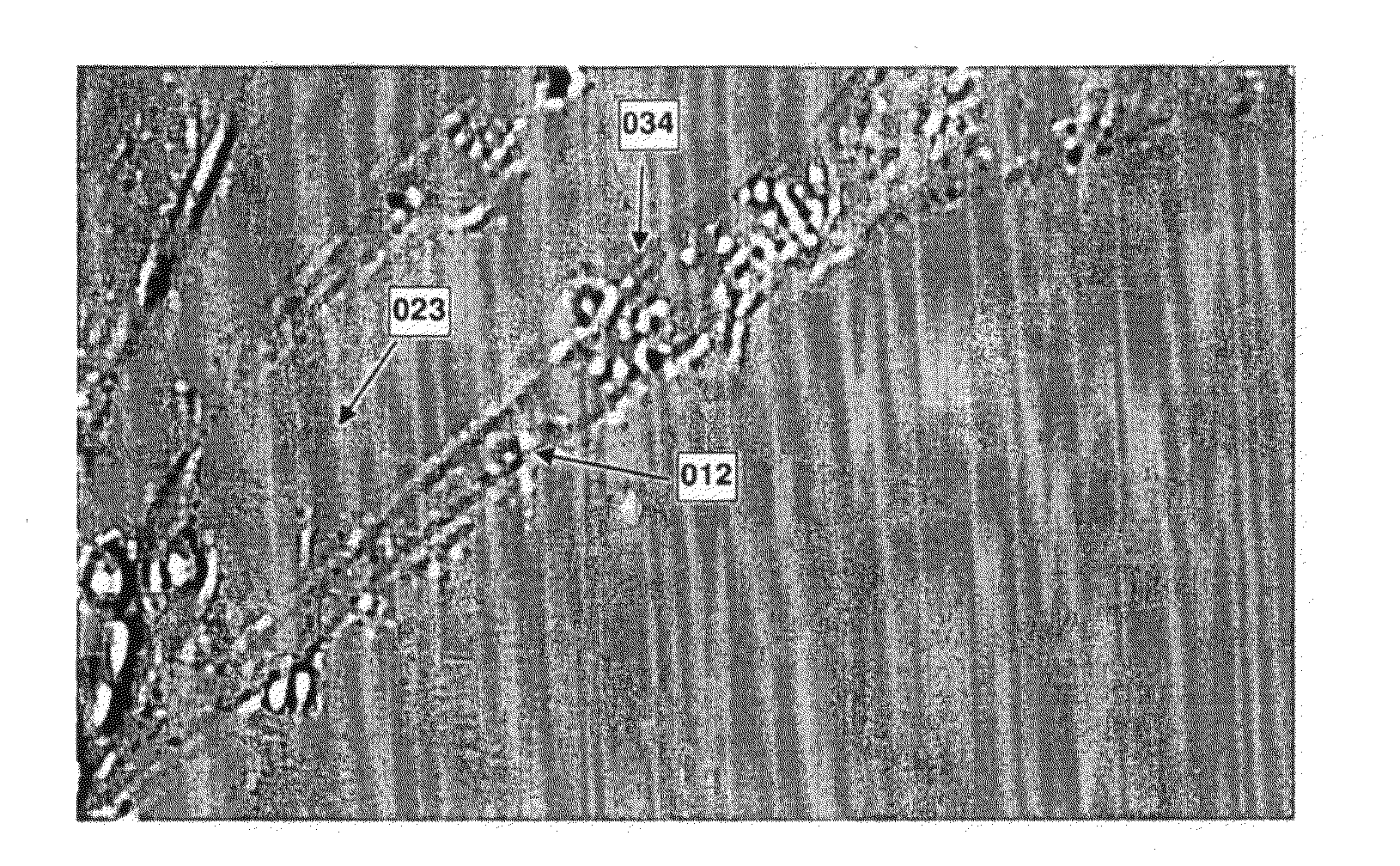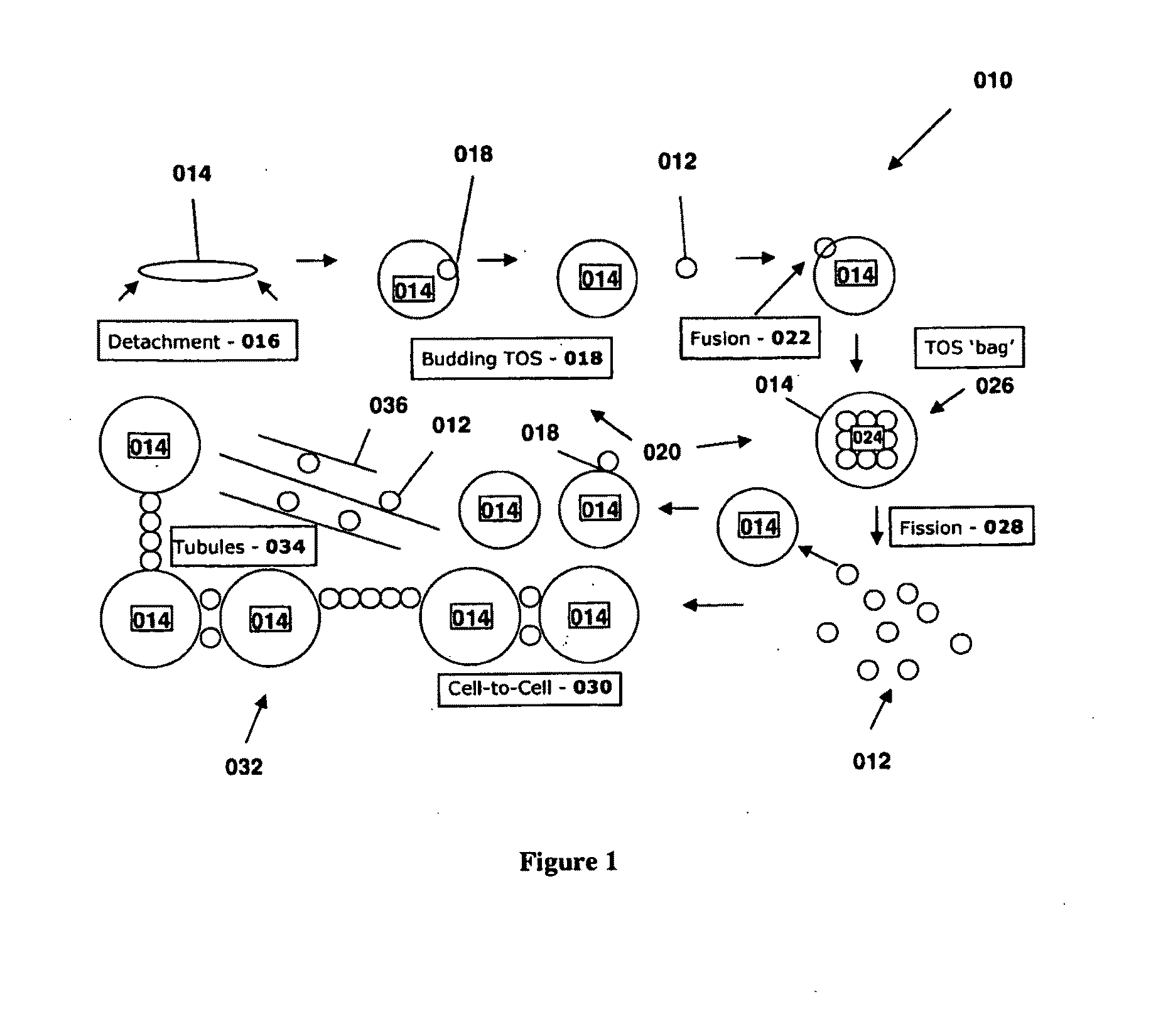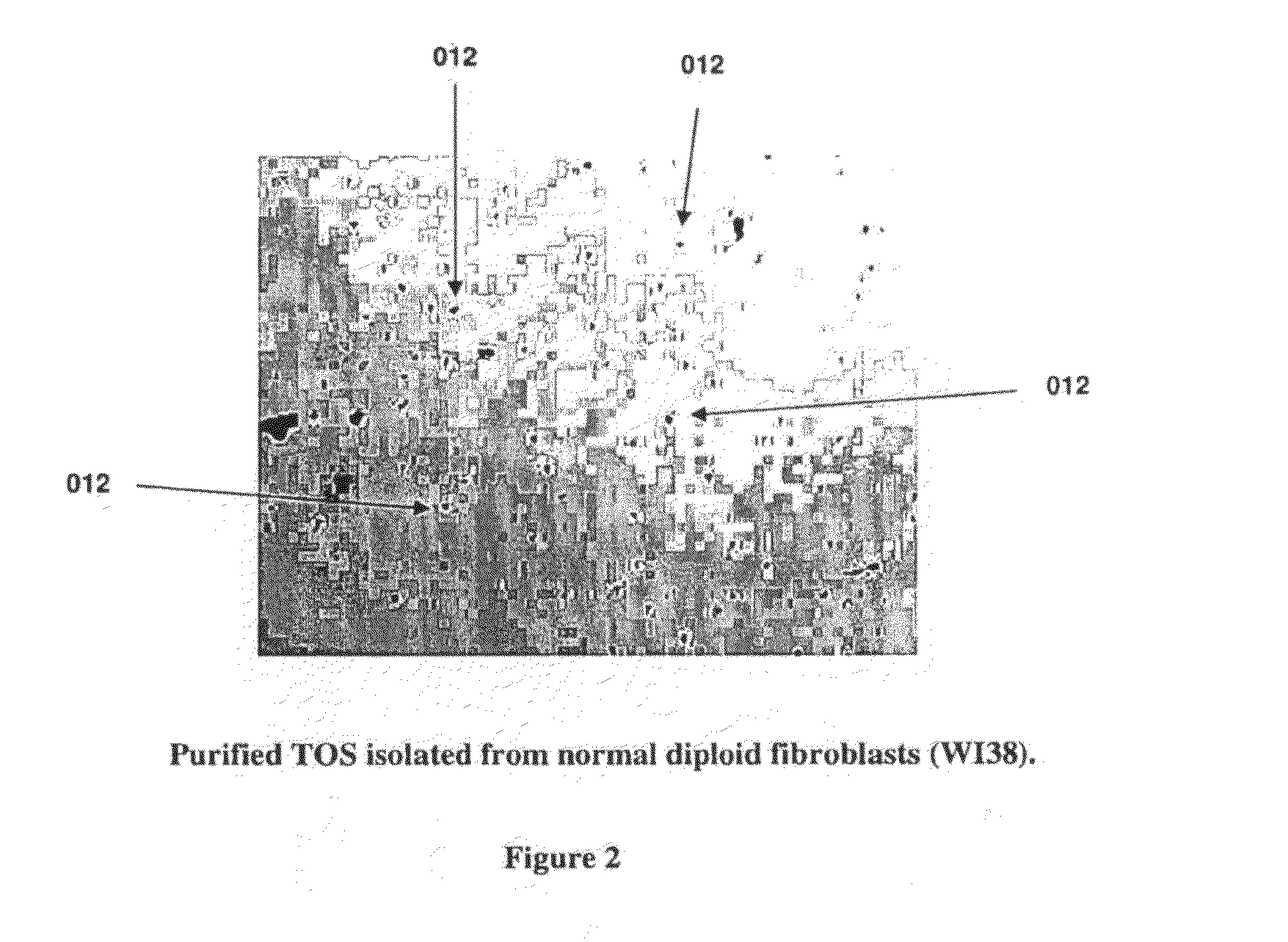[0035]TOS represent an important potential tool for
gene therapy. TOS are useful vectors for
gene delivery as they efficiently and rapidly interact with
cell surfaces, and are readily internalized to elicit rapid morphogenetic effects on the target
cell. TOS represent an important tool for
gene delivery in that they induce
genetic recombination between their genetic contents and the host
cell chromosomes to achieve a stable genetic and phenotypic effect in the target cell. TOS may be produced and purified to any desired amount or concentration utilizing the methods provided herein. A method of gene therapy utilizing TOS comprises the steps of providing therapeutic genetic material within TOS by the methods disclosed herein, providing a mixture of the TOS and a pharmaceutically acceptable carrier, and then administering the mixture to a subject in a therapeutically effective amount to deliver the TOS-
gene product and produce a phenotypic response.
[0037]In a further embodiment, a method is provided utilizing TOS as a tool for bioengineering of recombinant genotypes based on the facility with which these structures initiate recombination among themselves and with host cells in culture. That TOS enter cells by fusion and exit by
fission, or
budding, facilitates their use as
gene delivery systems.Therapeutic Aspects of TOS in
Disease and
Cancer[0038]There are many potential implications of the involvement of TOS in de novo
solid tumor development in furthering our understanding of how cancer develops in its earliest stages to acquire an invasive, metastatic, and genetically unstable
phenotype. TOS are novel structural cell-derived entities which have been demonstrated herein to be responsible for multiple aspects of
solid tumor development. In another aspect, TOS enables genetic
instability in tumors via novel forms of
cell fusion and somatic recombination. In another aspect, tumor spread via formation of TOS tubules as conduits facilitates TOS migration, thereby enabling the further spread of TOS, increasing tumor network surface area, increasing cell-to-
cell contact in the absence of
angiogenesis, and thereby permitting tumor spread without vascularization. In another aspect, TOS enables cell-to-
cell contact and tumor
cell mass migration to generate solid tumors. In another aspect, TOS has been demonstrated to mediate tumor / stroma micro-environmental interactions associated with proposed epithelial-to-mesenchymal transitions (EMTs), and tumor /
stem cell interactions. In another aspect TOS represents a preventive and therapeutic anti-cancer target based on the role in
solid tumor formation and spread, analogous to the processes of invasion and
metastasis. TOS has been utilized to induce the morphological and physiological transformation of
normal tissue into tumors. Thereby demonstrating tumor-derived TOS as an important clinical therapeutic target in the treatment and prevention of cancer. In another aspect, TOS acts as a therapeutic target in that the vascular spread of TOS enables tumor metastases transforming
normal tissue at diverse systemic sites remote from the origin of the
primary tumor, with the result of metastatic disease. Thus, TOS from cancer cells represent an important therapeutic target in clinical
medical treatment of
systemic disease.
[0046]In a further embodiment, the biological functions of
plant TOS with therapeutic anti-cancer activity suggest that these structures play an important role in
plant defense mechanisms that target diverse cellular systems and adds importantly to the spectrum of TOS activities with potential therapeutic applications. These unique cellular entities may represent a critical
cellular component associated with basic processes of metazoan evolution, thereby contributing to a fuller understanding of basic biological processes critical to the structural and functional organization and development of the multi-cellular
system. Moreover, the experimental manipulation of TOS may afford tremendous novel opportunities for developing new therapeutic strategies for the treatment of diseased human tissues.
[0049]In a further embodiment, TOS induces morphogenetic transformation of
target tissue to cells resembling the tissue origins of the transforming TOS. The genetic and morphological transformations associated with TOS, i.e., producing tissue-specific
morphogenesis, has profound implications for the treatment of a
broad spectrum of diseases resulting from genetic dysfunction,
tissue damage or injury. Moreover, the observed morphogenetic properties of tissue-specific TOS in inducing phenotypic responses in target cells, that are associated with conversion to the
tissue type from which TOS originated, demonstrates therapeutic value in the morphogenetic transformation of diseased tissue to a normal
phenotype.
[0050]TOS enables transfer of genetic material between cells, as discussed above. TOS activity has a profound effect on
gene expression consistent with morphogenetic transformation, and the stable transfer of genetic material by means of genomic recombination with recipient cells. The controlled regulatory mechanism directing patterns of
gene expression consistent with specific tissue types intrinsic to the
mechanism of action of TOS particles demonstrates the corrective genetic remodeling of diseased human tissues of all types using TOS based therapeutics.
 Login to View More
Login to View More 


